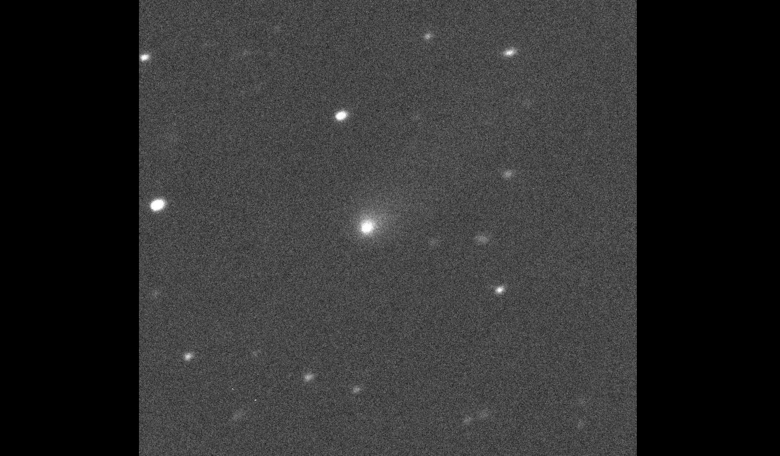Nearly two years ago, people on Earth had their first glimpse of an an interstellar interloper as a strange-looking object briefly sped through the Solar System before heading back away out of view of our telescopes. Now we might be set to have another extraterrestrial visitor, as an amateur astronomer has just found what appears to a comet from another star system on a path towards the Sun.
This new object - designated C/2019 Q4 (Borisov) - was discovered cruising around three astronomical units (about 450 million kilometres) from the Sun on 30 August, 2019, by Gennady Borisov at the MARGO observatory in Nauchnij, Crimea.
After its initial detection, NASA’s Scout system, located at the Jet Propulsion Laboratory in Pasadena, automatically flagged the object as possibly originating from a far-flung location. Since then studies by a raft of astronomers across the globe, have helped paint a clearer picture of what potentially will be only the second such interstellar object to be detected.
Current estimates are that C/2019 Q4 (Borisov) appears to be somewhere between 2 and 16 kilometres (1.2 and 10 miles) in diameter. It is very bright, has a fuzzy appearance and an orbital eccentricity of 3.2.
Eccentricity is a measure of how an orbit deviates from being circular. A perfectly circular orbit has an eccentricity of zero; for example, the eccentricity of the Earth’s orbit is currently about 0.0167. Higher numbers indicate more elliptical orbits and at 3.2, the newly found comet’s orbit can be described as hyperbolic.
This highly eccentric/hyperbolic orbit is what gives C/2019 Q4 (Borisov) away as being a would-be interstellar visitor rather than a local inhabitant of the Solar System knocked off its course.
So far, the visitor part is all that C/2019 Q4 (Borisov) has in common with our first cosmic tourist, ’Oumuamua. ’Oumuamua lacked the tell-tale signs of a coma and was much smaller at around 100 and 1000 metres long, but no doubt the comet will generate just as much interest.
"Unlike 'Oumuamua, whose asteroid-or-comet nature still gets debated, this one is definitely a comet. If it is unequivocally interstellar, it'll be fascinating to see how its composition (spectral properties) compares to the variety we see in comets from our own Solar System,” tweeted astrophysicist Karl Battams, from the Naval Research Laboratory in Washington DC.
The comet is currently speeding towards the Sun and will reach perihelion (its closest point) on 8 December, 2019, at a distance of about 300 million kilometres (190 million miles).
"The comet's current velocity is high, about 150,000 kilometres per hour (93,000 mph), which is well above the typical velocities of objects orbiting the Sun at that distance," said Davide Farnocchia of NASA's Center for Near-Earth Object Studies at JPL. "The high velocity indicates not only that the object likely originated from outside our solar system, but also that it will leave and head back to interstellar space."
If you have access to a telescope then you might have a good opportunity to see the comet as it will be hanging around for a few months before it makes a hasty retreat. "The object will peak in brightness in mid-December and continue to be observable with moderate-size telescopes until April 2020," said Farnocchia. "After that, it will only be observable with larger professional telescopes through October 2020."











